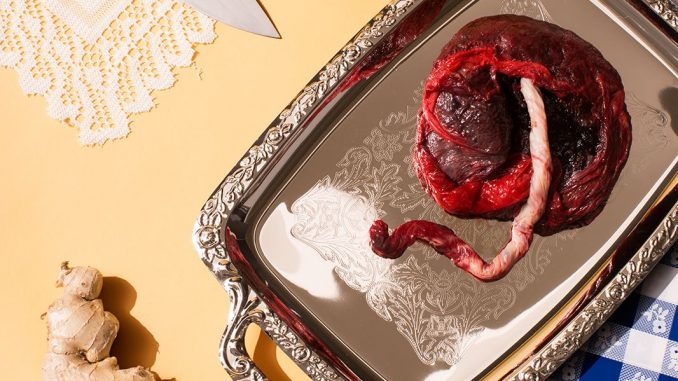
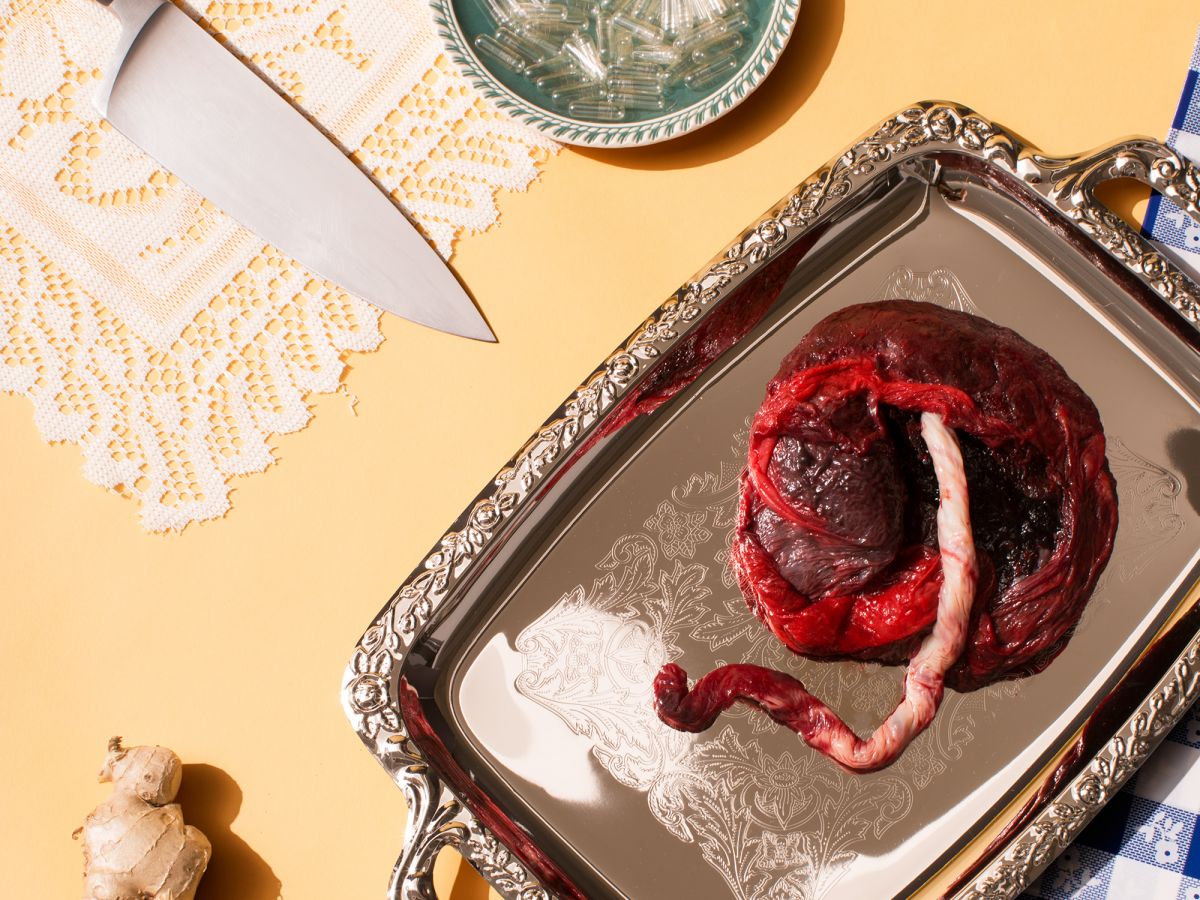
Photographed by: David Brandon Geeting.
The human placenta is one of the most miraculous things about the most miraculous thing a human body does. This organ, which is responsible for providing nutrients and oxygen to your growing baby and filtering the baby’s blood, is unlike any other organ in the body because it is transient. It just shows up when you get pregnant, and it goes away (after you birth it) when you no longer need it. It is also the only organ that’s not completely your own, even though it grows inside of you.
“It’s half and half. Half of the placenta is mother’s tissue and half is the fetal tissue,” says Mark Kristal PhD, professor emeritus of psychology at the University of Buffalo. This fact, that it’s not even just self-cannibalism, but also actual cannibalism, makes the trend of human mothers eating their placentas seem even weirder, doesn’t it?
Dr. Kristal, who studies studies placentophagia, or the act of eating the placenta after birth, in nonhuman mammals, has become the go-to expert (read: official naysayer) on the placenta-eating phenomenon since it became A Thing again a few years ago. He says that while almost all mammals have an intense basic drive to eat the afterbirth, humans do not seem to have the same drive. In fact, most human women are grossed out by it, and “there must be a reason why,” he says.
And yet, here we are.
While it’s true that small amounts of dried human placenta have been used as an ingredient in various Chinese Medicine remedies for centuries, mothers eating their own afterbirth has not been documented in any other human society, outside of a passing fad among hippies on back-to-nature communes in the late-’60s. Modern proponents of the practice — first documented in the early 2000s among woo woo Brooklynites, and then woo woo mom bloggers as well as doulas and midwives all over the country — say eating the organ during those rough postpartum months helps beat the “baby blues,” boosts breast milk production, balances hormones, and offers sleep-deprived new moms much-needed energy. They also argue that since nearly all mammals do it, it is simply a “natural” (and therefore healthy) thing to do. Medical doctors and scientific researchers disagree.
No research has been done on the practice in humans, aside from a single disputed paper from 1954 that found it might improve milk supply. Also, the argument that it’s “natural” is flawed from the start, Dr. Kristal says. “Women do not report any attraction of the placenta when they’re giving birth, unlike other animals that immediately start licking it and eating it. Humans find it very aversive. Something is different about it for humans.”
Still, in the past few years, we’ve heard about new mothers eating their placentas raw, cooking it into a favorite lasagna or spaghetti recipe, blending it into smoothies (as Gaby Hoffmann did), or the most popular tactic for placenta-averse human mothers, freeze-drying it so the placenta can be ground into powder and encapsulated (as Kim Kardashian did).
Proefssional services for placenta encapsulation are popping up everywhere — states like Florida and Tennessee in addition to the usual suspects, New York and California. Texas passed a law in 2015 that protects a woman’s right to take her placenta home from the hospital with her. This summer a Mississippi woman won the right to take her placenta home in court.
Dr. Kristal blames the amplifying powers of social media for the way the practice has caught on lately. “The thing about placenta eating is that this time around, as opposed to late 60s, is that this time around you have the internet and social media,” he says. “People tend to put a lot of value in anecdotal data, which is probably not even a step up from urban legend. And people tend to believe everything they read on the internet.”
Interestingly, though, simply believing in the practice may indeed lead some people who do it to at least perceive some benefits, especially when it comes to that tricky witch known as your mood. “This is the placebo effect, and it’s very powerful,” Dr. Kristal says, adding that depression and other mood disorders are often extremely susceptible to placebos. When I ask if he thinks the placebo effect alone is reason enough to do it, he replies, “That’s the big ethical issue with all placebos: Whether they work the way people think they work or not, does it matter as long as it doesn’t harm them?”
The problem, he continues, is we don’t know for sure whether placenta eating is harmless. There is a huge potential for contamination, due to mishandling or infection. There are hundreds of compounds in the organ, and we have no idea what effect they have when you ingest them, Dr. Kristal says. There may be long-term effects that may not be seen until years later or until the next pregnancy.
It’s also true, however, that there are so far no documented cases of anything horrible happening among the thousands of women who have done it. But still, Dr. Kristal adds: “I’ve had people after I’ve given lectures come up and say ‘I tried it, it made me sick.’ Or ‘I tried it and it did nothing.’ Again these are anecdotal responses. But those are the responses that never get publicized.”
Well, Dr. Kristal, consider your wish granted. Ahead, an interview with a woman who encapsulated her placenta (it’s actually the one pictured), took her pills dutifully, saw no perceivable benefits, and won’t be doing it again after future births. But, twist, she’s still glad she did it.
“It’s like a mom badge or something,” Ly, 33, from New York, NY explains. If you look at it that way, the placenta-eating phenomenon begins to make a little more sense. Giving birth is one of the most transformative human experiences, and the difficulty of the postpartum period varies depending on the person. Doesn’t it make sense that women would grasp for some way, no matter how wacky, to control and perhaps even honor the experience?
Read on to hear more about Ly’s postpartum adventure in placentophagy, and why she has no regrets about eating her placenta.
(One quick note before you do though: No judgment as to however this story inspires you, but if you do end up encapsulating your placenta, please take care to wear gloves while handling it and to follow all proper safety precautions. These photos are meant as illustration, not as a guide.)
How did you decide to eat your placenta in the first place?
I had heard about placenta eating in so many different forms, either it was prevalent in celebrity culture or it was through word of mouth through friends. I was adamant when I was pregnant the first time that it was something I wanted to try. When we were pregnant with Grey*, I was so curious about what the benefits were and if it would really help if I were to get postpartum depression because I’ve always been a sad girl. In birthing classes, it was something I definitely asked questions about and something the teacher (who was a doula) suggested we try if we were open to it.
What did you doctor say about it?
I asked my doctor if it was safe and if I could keep my placenta to try. She said that it wasn’t necessarily true the things I had heard [about the health benefits], but I could keep my placenta because it was mine.
Funnily enough I had to re-ask the hospital if I could keep it, because most hospitals won’t let you keep your placenta. [Ed. note: This is because most hospitals consider the placenta to be medical waste, which is true. But it’s also true that it’s your medical waste.] And they said I could keep it, but they couldn’t refrigerate it overnight, and it would need to be frozen right away. A friend of mine told me some crazy story about when she had her second daughter the hospital wouldn’t let her keep her placenta so she had to steal it out of the trash and put it into a cooler and have someone take it home for her.
Photographed by: David Brandon Geeting.
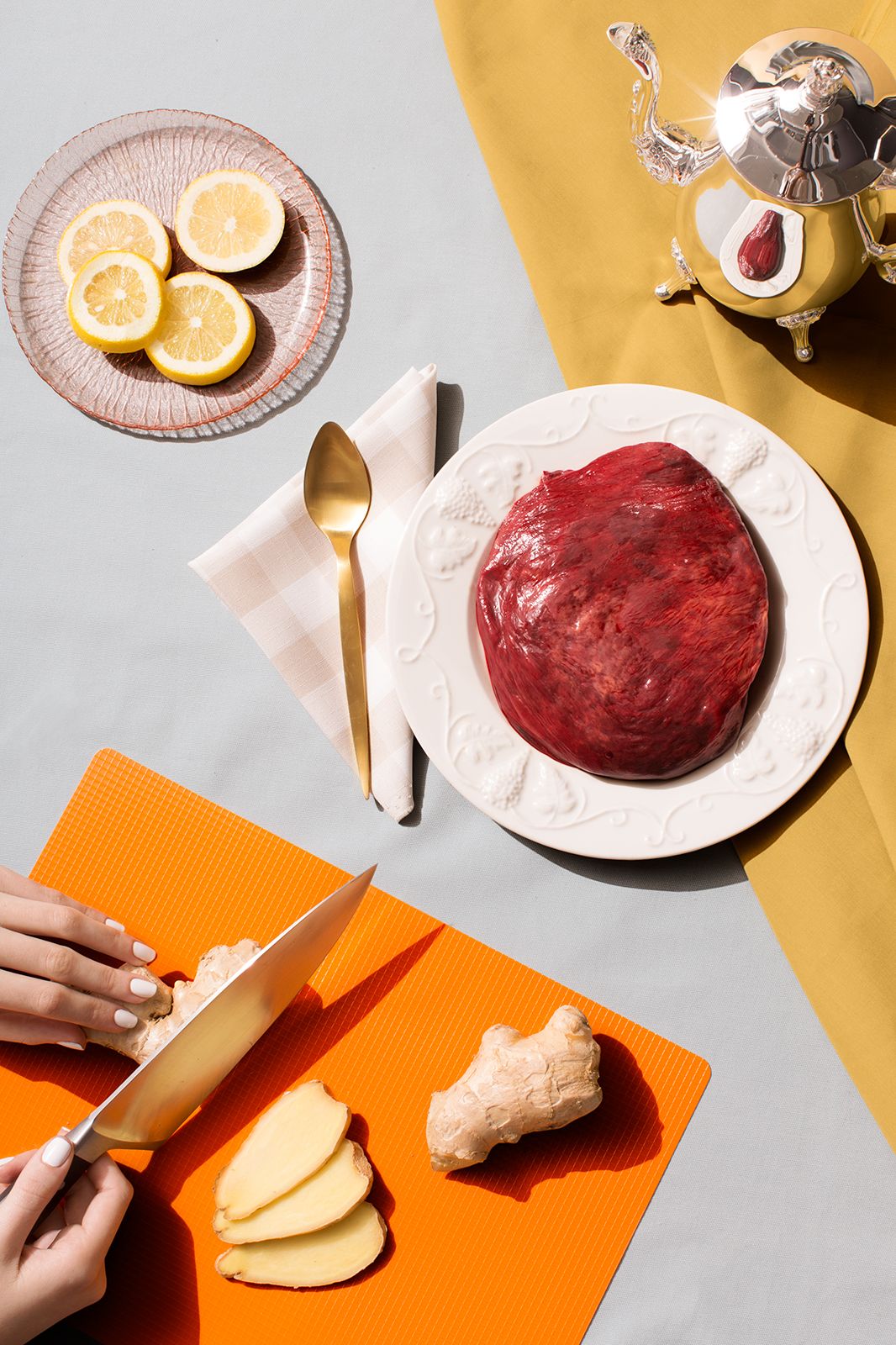
So did someone take yours home for you?
Yes, I was very good with making sure the moment I had my child that my best friend came to pick up my placenta and immediately put it into our freezer so it was stored correctly. And once we had the shoot [for this story], I immediately took it back home and froze it until I was ready to prepare.
As for my doctors they both were very okay with me taking it. My direct ob-gyn was like, “these won’t do anything for you,” very straightforwardly. But I wanted to give it a shot and they let me give it to a friend to take it away. They didn’t need to run any tests, I don’t think.
How did you go about finding someone to prepare it?
In terms of finding someone to prepare it, I did it myself. I did a lot of late night Googling, and found sites that would produce the placenta pills for upwards of 200 bucks, which was pretty steep for us. I ended up finding a site that showed step by step how to make the pills myself.
The steps were easy enough and the materials were a lot less money than the service. So I got the dehydrator on Amazon for 30 bucks and the coffee grinder for 20 bucks and my friend oddly enough was having a garage sale and gave me his pill encapsulator and extra pill gelatin casings.
Photographed by: David Brandon Geeting.
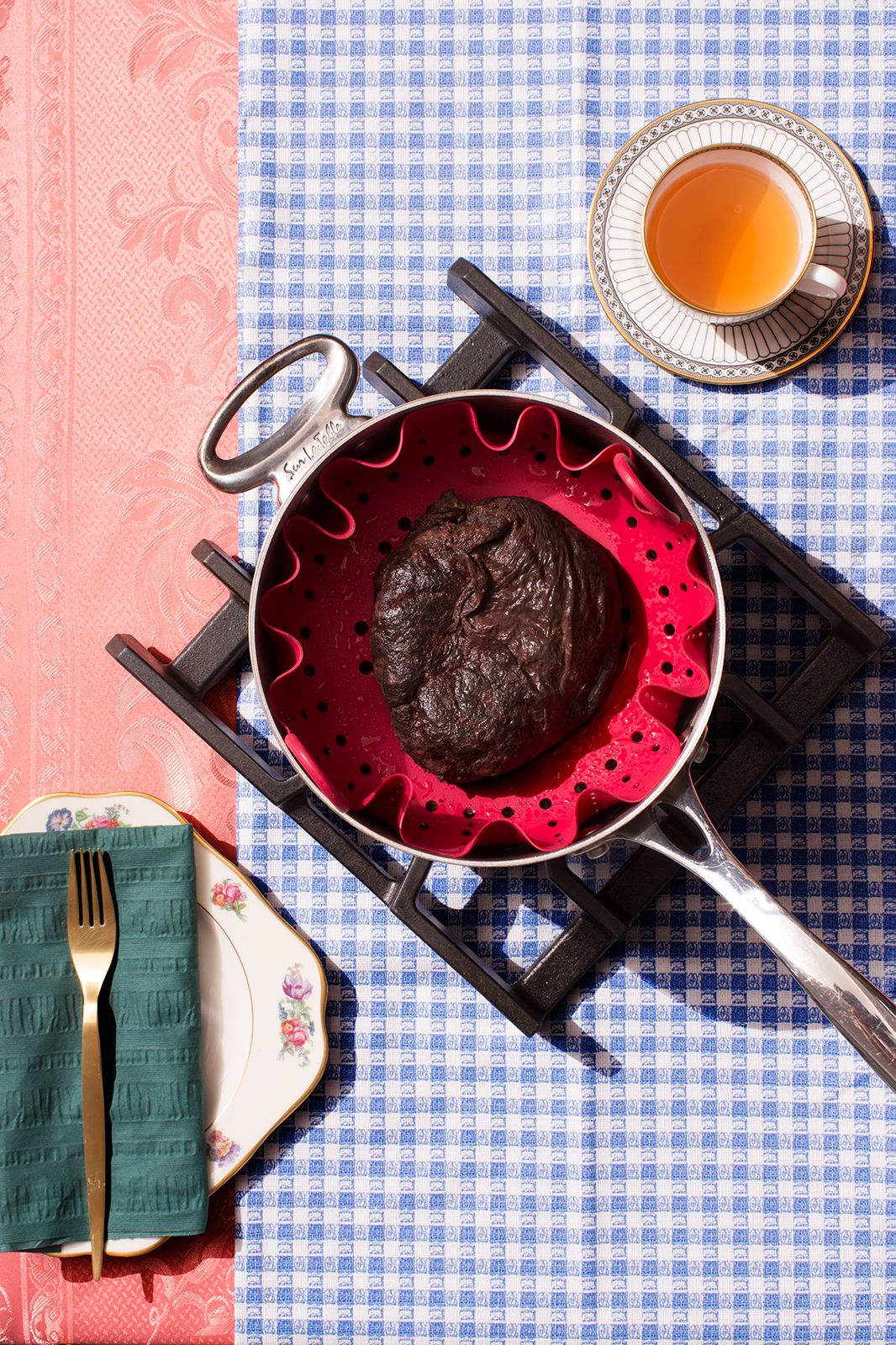
What did your family think of your desire to do this?
[My husband and I] live in the city, and we’re like full on New Yorkers in that we’re much more cynical and way less earth-mother-y than our Brooklyn friends, so it was interesting that I was so willing to try this out because usually I’m not this way. I’m actually very pragmatic and overly analytical about life. So, people around me were very skeptical and I just did my thing to try it out and see if there was something I could do.
I think my parents’ [response was basically]: “Gross, stop doing that.” They are immigrants from Vietnam and really didn’t see the point because they are both very practical people, too.
My husband was somewhat the same, like “Okay, cool. I respect your need to try this but it’s fully a gimmick.”
Photographed by: David Brandon Geeting.
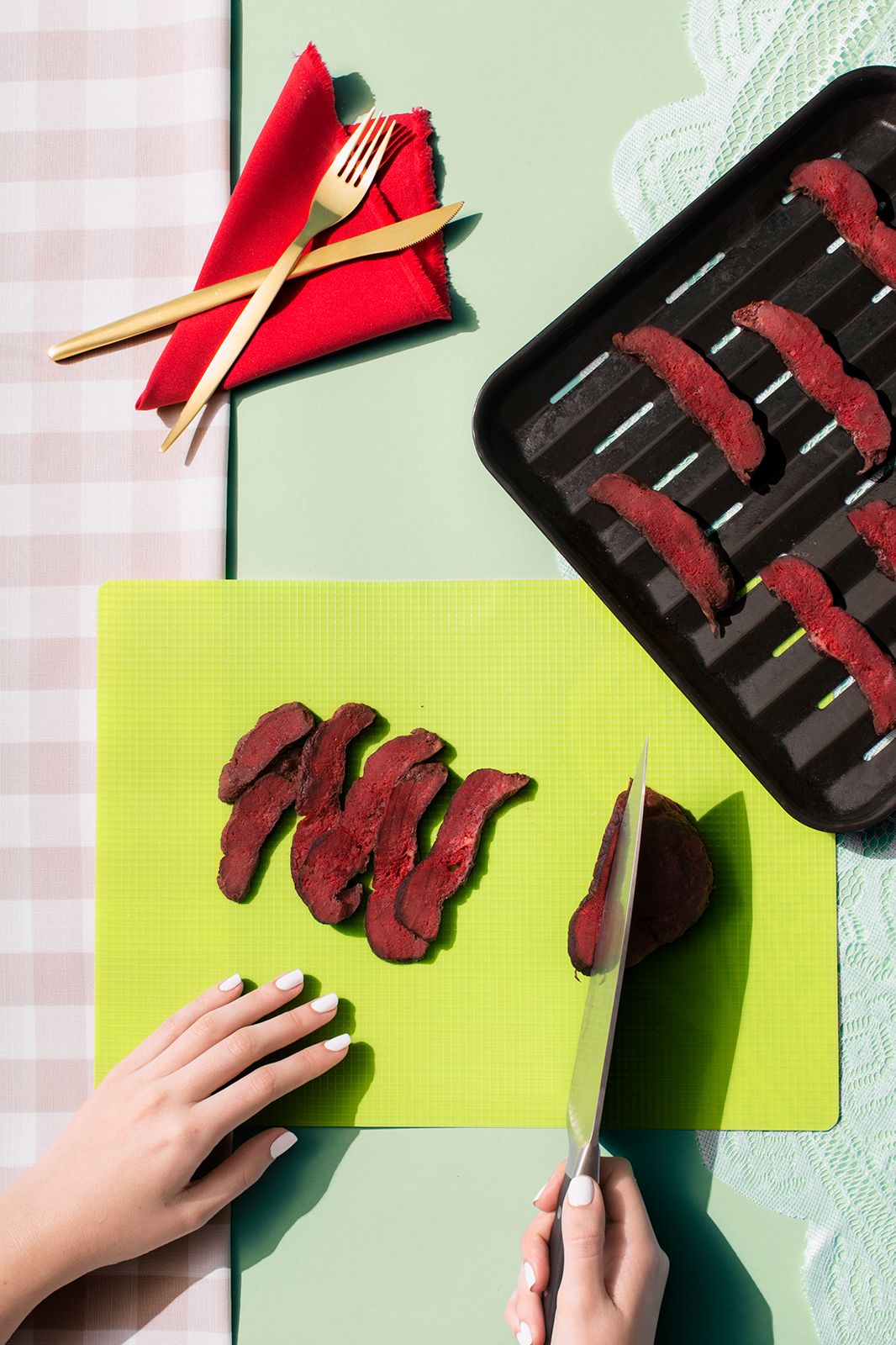
You said it was a “need” to try, what do you mean by that?
Well, I did follow along with the fad because I was curious if these health benefits were in fact true, especially because I ultimately had such a difficult time nursing. It took 10 weeks before my milk really came in so I was relatively desperate for anything to help me produce and provide for my child. But I also think that there’s something to acknowledge about giving birth to our daughter — even if it’s re-consuming a part of yourself — it sounds really hippie dippy but there’s something cyclical about the process of life and how we grow and benefit from ourselves. Do you know what I mean?
Yes, I think so. I mean as a non-mom, I think that birth, postpartum, and motherhood generally is incredibly intimidating. The postpartum experience, especially, seems so unpredictable (you really don’t know until you get there) and it feels like whether or not the placenta pills work, it does feel like doing SOMETHING, at the very least to try to have a good experience? What do you think?
Motherhood is incredibly intimidating. I always say it’s great it takes 9 months to gestate a child because it literally takes 9+ months to prepare and overcome your emotions to become a mother. In part, for me taking the pills was taking some control back for myself, with the rude awakening of motherhood. Really, there’s so much preparation for the birth but not for after the birth.
I had such an anticlimactic birth, but the postpartum [was harder]. It was the feeding schedule and healing from tearing and this person constantly needing you to provide for them and feeling helpless and unable to produce enough milk for them is enough to make anyone spiral into depression. The pills were a way for me to test some theories but also maybe just be one with myself. [It was partly about making] the most of my situation and trying to actively make it a positive experience.
Photographed by: David Brandon Geeting.
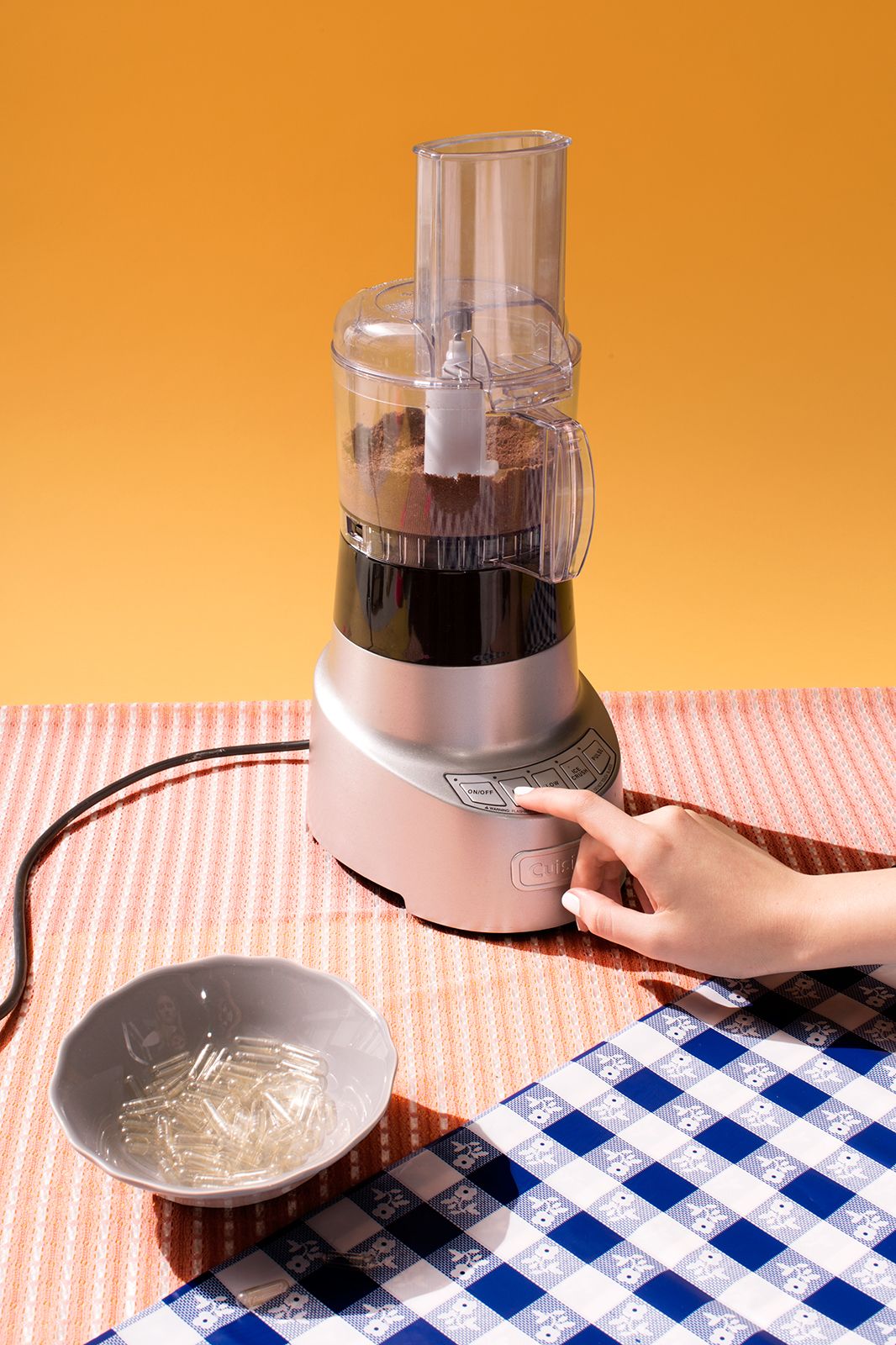
What was it actually like to take the pills?
All I can say is I grossly could taste the blood when the pill would get stuck in my throat. I can’t remember exactly, but I think I didn’t start taking the pills right away. I turned to them eventually to help with my breastfeeding issues.
Right after I popped my daughter out, I nursed her. She was ravenous through and through. I fed her a lot the first few days (so I didn’t feel the need for the pills right away), but she never really had a great latch to begin with. I have softer puffier nipples and they were not at all accustomed to so much wear and tear. So immediately when I started nursing my breasts exploded and went from being a B/C (which was a considerable cup size from my size A/B before pregnancy) to a C/D overnight. They hurt so much when my milk finally came in after those first few days of colostrum. And on top of that my nipples were both cracked and bleeding. (No one had told me about nipple shields, and how to protect them.) The infected nipples right off the bat set me on a bad path with nursing. My milk supply was low because I persistently had clogged ducts from infected nipples, so I would have to nurse longer and longer to pass the clogs which would keep my nipples infected. It was a vicious cycle.
My nipples would bleed and scab, and once that went away I would get milk blisters from pumping and nursing to try to get my supply up. It wasn’t until 10 weeks that my milk production really came in and was able to make like 12 oz in one sitting (yay!).
So now, I can’t even remember exactly when I started taking them after that initial boost, but it didn’t help. I was still having clogged ducts consistently. I was hoping that the pills would help with that, as well as with other aspects of my body healing, because even though I had a clean bill of health from my doctor at 4 weeks, I was still in some weird form of menopause where I had dryness down-there and hot and cold flashes. But it didn’t. Maybe I did it wrong, who knows!
Photographed by: David Brandon Geeting.
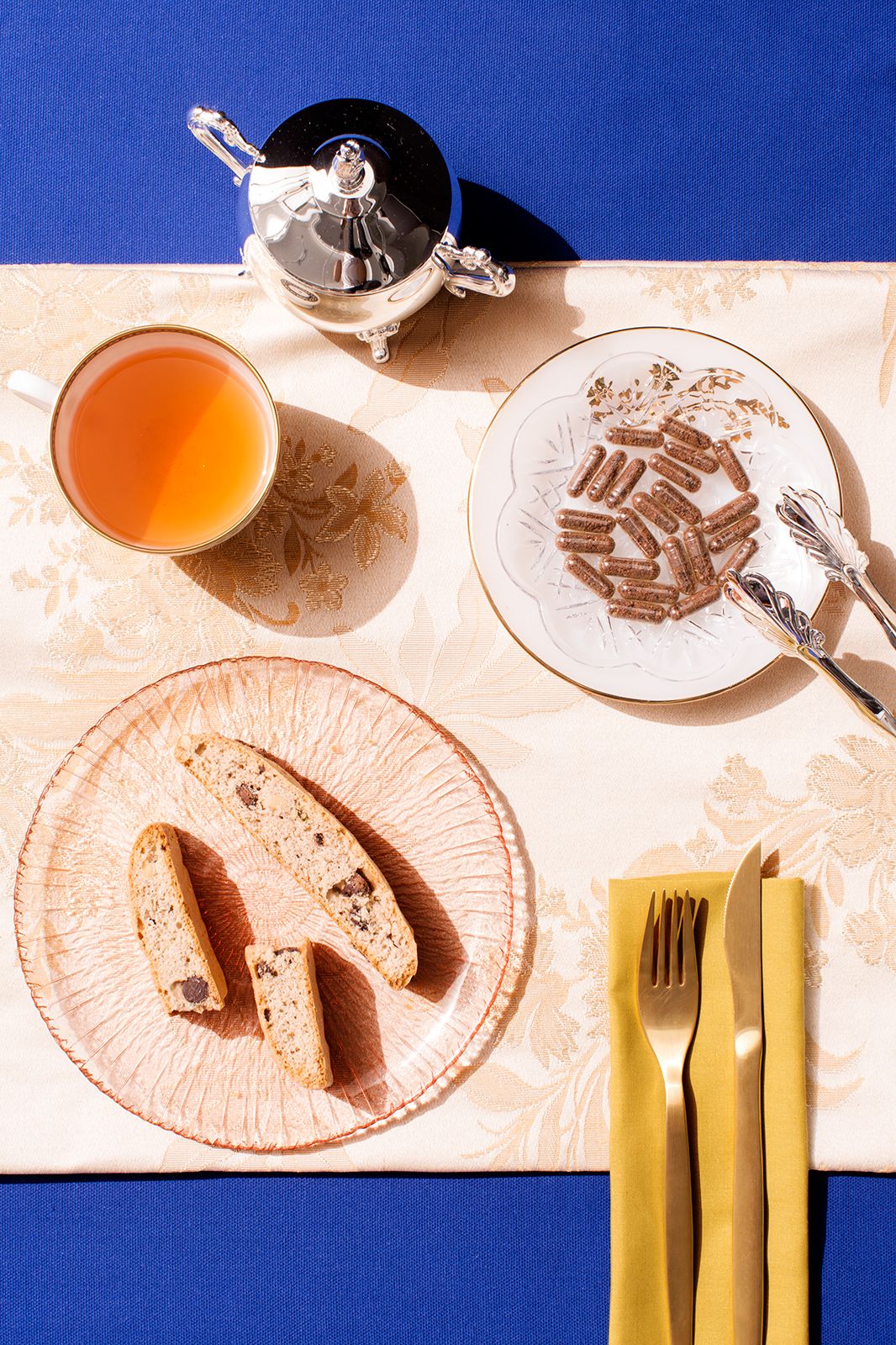
How long did you take them before you gave up?
I took the pills for like two months and still would get the clogged ducts intermittently, so I finally gave up on them. Even after I stopped the pills I would get mastitis a few more times and once I even got a blockage so bad that it was like a bar of soap lodged in my breast, my doc had to send me to a specialist to get it removed with a syringe, which I thankfully didn’t have to go through with it cause I was able to pass it on my own with a hot shower and cold compress. Lastly, the clogged ducts didn’t go away until Grey was 13 or 14 months old when I fully stopped pumping and reduced my milk production considerably.
Photographed by: David Brandon Geeting.
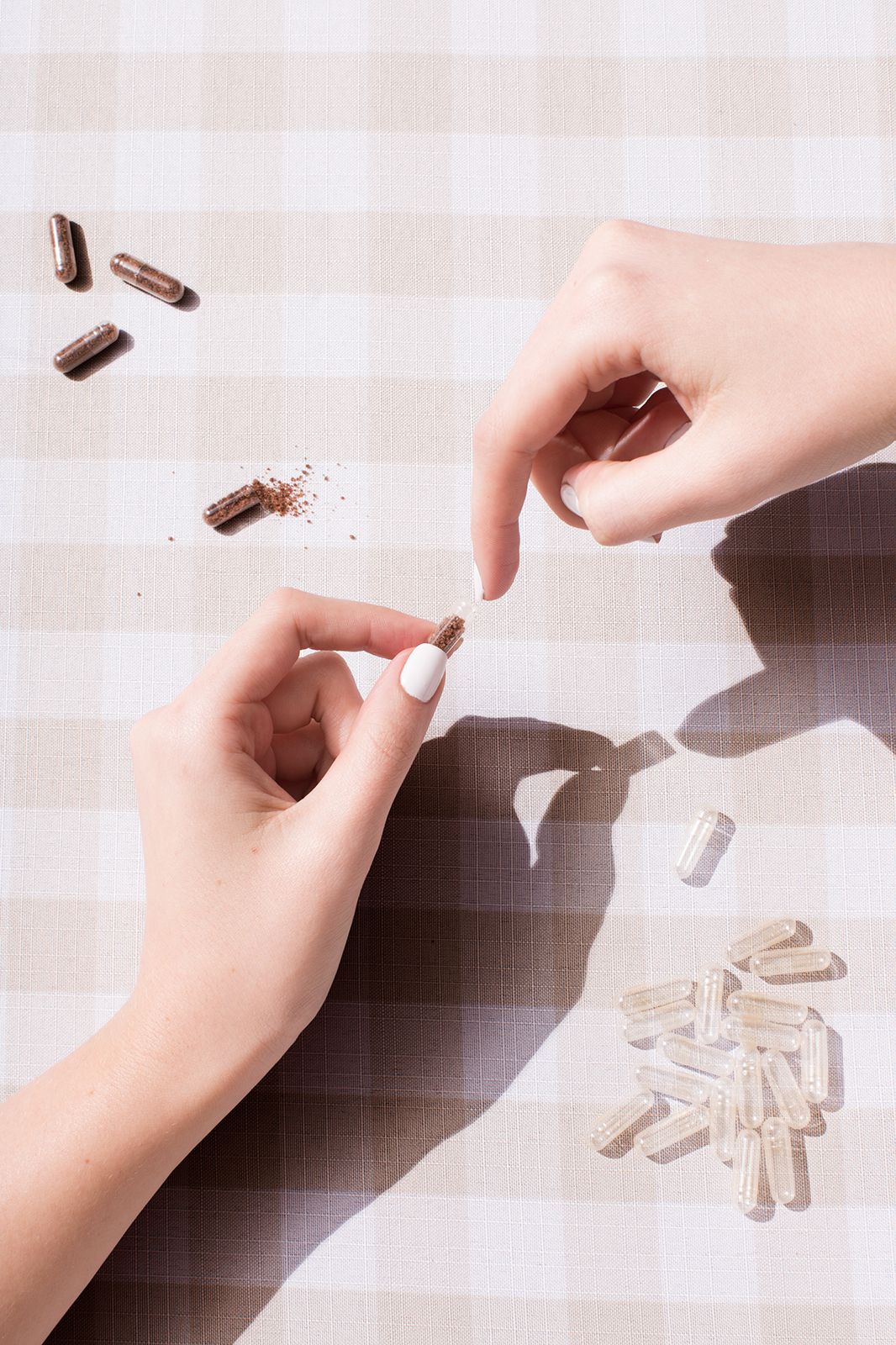
So, it was a waste of time in terms of health benefits. But you don’t regret it?
Ultimately, I’m glad I tried and I’m glad I did it myself, I was proud of myself for preparing it and everything so I can say I did it.
Now that I’m pregnant again, this pregnancy is higher risk and I have placenta previa [a condition where the placenta is covering the cervix, which can cause problems during labor] right now — its only partial and moving towards a low-lying placenta. The jury is still out if I can have a vaginal birth or if I have to have a C-section, in which case means I definitely cannot keep my placenta.
I think regardless it was nice to do it the first time around. But even if I can keep it this time, I want to do something else with it, like plant it with a tree versus ingesting it.
Photographed by: David Brandon Geeting.
Click HERE to read more..
You can publish this article on your website as long as you provide a link back to this page.

Be the first to comment